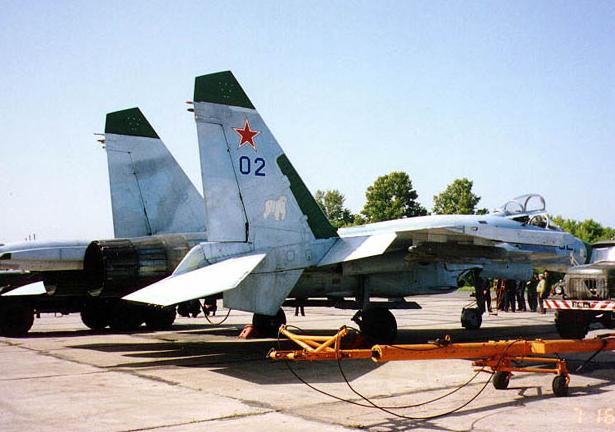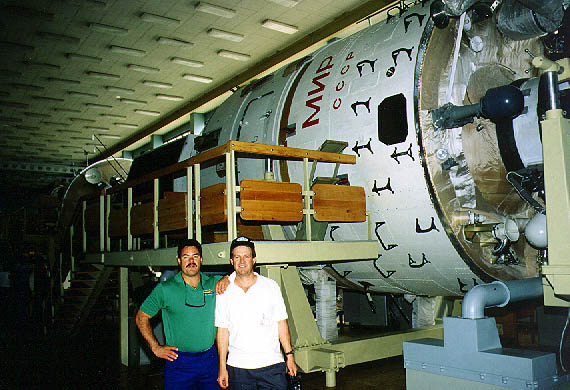 |
 |
The book is 8 1/2" by 11", 216 pages. Wind Canyon
Publishing (wind@gnt.net)
(800) 952-7007 - Fax (850) 729-1112 |
King Air taking off from Santa Monica July 4, 1992. Mark Eaton was the King Air
pilot. |
In July 1992 I documented a fascinating, dangerous and unique aviation
adventure; one that saw 12 small aircraft become the first group of
private aircraft to circumnavigate the globe while crossing the entire
landmass of Russia; one that saw an international group of participants
sneak through one of those rare optimistic times in Russian history
that are very rare indeed; one that saw my whole life altered as I
ended up writing a book about the World Flight Over Russia. But first
I was changed by almost dying twice, once when we almost ran out of
fuel and once from sickness, and being able to view nature's handiwork
from Greenland across Siberia and into Alaska.
In March 1991 Marcel Large of Raid Intl., headquartered in Paris, took
the first private group of aircraft into Soviet airspace when they
flew to Murmansk, and that is when the idea of a group of primarily
American crews flying around the world across the Soviet Union took
hold. Marcel recruited fellow Frenchman Eric Vercesi, then working
out of Santa Monica Airport, to help organize from stateside. From
March 1991 to July 1992 they put together a very complex affair as the
Soviet Union fell apart for good, and against all odds 10 aircraft
left Santa Monica on the journey of a lifetime. We picked up 4 more
aircraft, two of them permanent participants, at Southend Airport near
London before moving on to Moscow via Helsinik.
 |
 |
|
We diverted for fuel at this landing strip at Narsarsuaq, Greenland
after hitting headwinds en route to Reykjavik, Iceland from Goose Bay.
|
Low-level run in the depths of Siberia. |
I was plucked by fate three weeks before departure when the
photographer dropped out and I was plugged in to perform the
documentation tasks in still pictures and video. I had only been in
one small plane before flying around the world in the King Air 200
follow-up support plane flown by Mark Eaton and also containing the
mechanic, spare parts and paying passengers. The rest of the
permanent group included 4 Bonanzas (1 a jetprop) 2 Cessna 421s, 1
Cessna 340, a Mooney flown by Marcel, a Piper-Archer and a Citation I
in the lead support role.
Two giant obstacles were fuel and dealing with the Russian government,
which was in such a state that the U.S. Embassy in Moscow often didn't
know who was in charge of what. First the engine manufacturers
refused to honor their warranties if Russian Av-gas ruined their
products, thus escalating the cost of participation dramatically.
Organizers then purchased 10,000 gallons of BP Av-gas and, after
numerous ideas were scuttled by Russian pressure, rented a Russian
IL-76 and a crew to fly with the group. We would hand pump the fuel
out of barrels from Moscow to the very tip of Siberia at Anadyr, where
we were the first Western or Civilian aircraft to land at this nuclear
launching site/Red Air Force Base. Cost of the IL-76 was $60,000.00,
which, when combined with the purchase price, brought the per-gallon
cost of crossing Russia to about $14.00/gallon.
 |
|
Mig-29 at Novosibirsk Airport.
|
Second was getting permission to fly across Russia and the routing.
Marcel, his wife Michelle, Eric and Paul Hollenbeck, another key
organizer working in Santa Monica, traveled to Moscow in January 1992
for meetings with Russian officials. But confusion reigned and
arrangements were left hanging, although it appeared the routing
around sensitive military airspace was going to make some flights
longer and more dangerous than anticipated. Organizing such a complex
affair during the crumbling of the Bolshevik regime was extremely
stressful, but they were lucky and tenacious in their endeavor. In
fact the final OK from Moscow didn't arrive until one month before
departure.
Another fascinating aspect is that Marcel wanted the first flight to
be followed by yearly World Flights, with a different group flying a
different route across Russia every summer. So he sought to build
bridges with Russian liaisons, businessmen, politicians and
dignitaries. When, through a quirk of fate, we ended up with then
V.P. Rutskoi as our benefactor, the ability of our group to attract
attention increased tremendously. In addition it was decided to have
American and English children write letters to Russian children in
Moscow and Novosibirsk, a major city in Western Siberia. Thus our
aviation adventure had a humanitarian side with long range goals of
establishing relationships in a variety of ways.
 |
|
Mark and Brad at Star City in front of MIR mockup.
|
On July 3,1992 I was a nervous wreck as the organizers and
participants gather at Santa Monica Airport for the final briefing,
which was followed by a group dinner that night. We had scrambled for
three weeks putting together my camera and video gear while trying to
plan for contingencies, which saw me wisely purchase water
purification kits and mosquito repellent. Frankly I had little I idea
what I was in for, and the pilots who sensed my condition furthered it
with wise cracks and tales of doom. The flight crews had been
planning this dream trip (italics) for almost 18 months, and now that
effort was about to become a reality.
The morning of America's Day of Independence dawned foggy and cool in
Santa Monica, and the flight crews and participants in the 10 aircraft
which left that morning had little idea of how truly special their
World Flight would become. That day we shared an ABC National News
broadcast with the Space Shuttle Columbia as the Astronauts blared out
"Happy Birthday America," leading to our story as Carole Simpson
announced the beginning of a "flight of 12 Earth bound planes flying
around the world across Russia."
 |
|
Low-level run in the depths of Siberia.
|
Our first major test was crossing the North Atlantic from Goose Bay,
Canada to Iceland, and from there we would land in London to pick up
the other aircraft and have a reception at the "Mayour's Parlour" and
a banquet at the RAF WII Museum at Hendon, a historic place where
great Airshows of the 1930s were held. From there we would enter
Russian airspace from Helsinki before landing on the grass field of
Tushino in the Northwest Prefect of Moscow, where Stalin and a million
Russians watched a military demonstration a few years before Hitler
invaded. In fact we were the first Western or Civilian aircraft to
land at that field as well, and the curious Muscovites came out in
droves to see the aircraft and the people who flew them.
We had quite a few close calls with stray aircraft, stubborn Russian
controllers and bureaucrats, but with all the troubles we managed to
complete our historic journey without leaving anyone behind; either
dead or alive. Two years after the fact, when it became obvious it
would never happen again, and knowing I had a great story at an
interesting time in history, I sat down to write the book, again with
little idea what I was in for. I wrote the book using 4 major pilot's
journals, 9 ancillary journals, interviews, what I remembered and the
25 hours of video tape still on hand. The video allowed me to
reconstrurct long forgotten events with extreme precision, then I
converted everything to present tense to give the reader the feeling
of being along for the ride.
Now that very detailed account of a most complicated journey is being
enjoyed around the world, the story of a grand adventure which took
place at a thorughly fascinating time in history."
Home Page
©
The Aviation History On-Line Museum
1999 All rights reserved.








